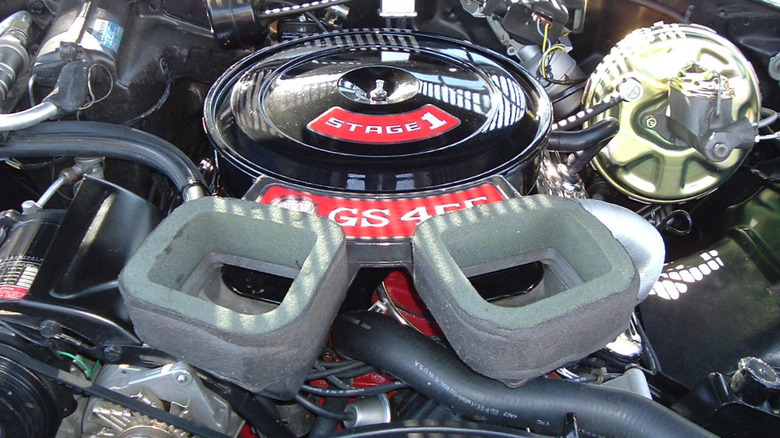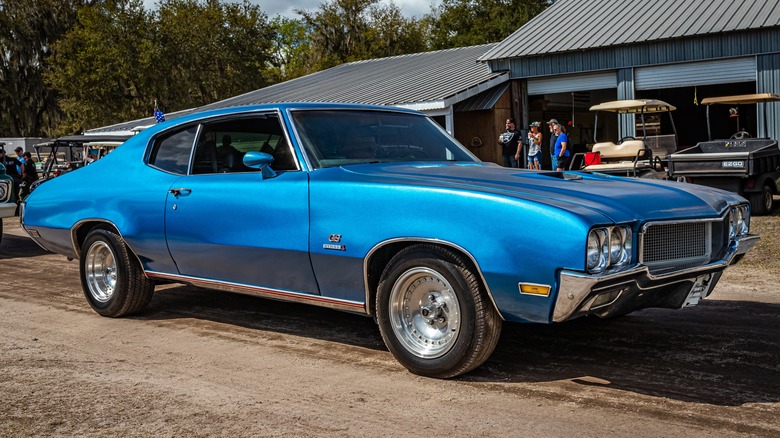Everything You Need To Know About The Buick 455 Engine
As GM grew and flourished along with the U.S. auto industry in the middle of the 20th century, its divisions began building larger engines. Buick was the first automaker to use a V6 engine in a mass-produced car, the 1962 Special. By the mid-1960's, muscle car mania had taken over the roads, with the legendary 1964 Pontiac GTO and 1967 Chevy Camaro marking significant milestones in the era's progression and ushering in the age of large displacement V8s.
Not to be left by the roadside, Buick produced some underrated muscle cars of its own, including the Roadmaster, Invicta, and Wildcat. Between 1968 and 1970, Buick joined two of GM's other divisions in unveiling 455 cubic-inch V8s. Oldsmobile was first with its Rocket 455 engine, and Pontiac and Buick both followed suit in 1970. Buick's roots with the engine actually stretched back to 1967, when the division released 400 and 430 cubic-inch V8s as replacements for the older nailhead V8.
[Featured image by Mopar89 via Wikimedia Commons|Cropped and scaled|CC-By 3.0]
Buick's 455 outlived the oil crisis
The cylinders in the 430 were bored out to 4.313 inches to make the extra 25 cubic inches. This allowed internals other than pistons to be shared with the smaller engines and made Buick's 455 block lighter than that of its GM cousins. The engine appeared in several models, including the Estate, Electra, and Riviera, but perhaps the luckiest recipient of the 455 was the Buick Skylark Gran Sport (shortened to GS on its badging), which could be purchased in Stage 1 and Stage 2 performance configurations, as well as a base version. The Stage 1 GS engine produced 360 horsepower and 510 pound-feet of torque and could get the 3,800-pound car from 0-60 in 5.5 seconds. The stage 2 package was installed by dealers and meant for Super Stock racing. Its upgraded heads, bearings, pistons, and Carter carburetor added more than $3,100 to the GS's cost, pushing the sticker price to $7,227.46 (almost $60,000 today).
The unmuffled Stage 2 455 was loud and nasty and produced 410 horsepower. For the street-legal 455, Buick focused on low-rpm torque. "Buicks were heavy, loaded with power everything," Buick engine development engineer Denny Manner told Hagerty in 2021. "That's how people bought 'em. Low-end torque was key because that's how people perceive performance." Unlike many of the V8 monsters of the early '70s, Buick's 455 survived the industry's change in reporting horsepower from gross to net figures in 1972 and the oil crisis that followed the next year. The Stage 1 version stuck around through 1974, and the base 455 lived on for another two years.

